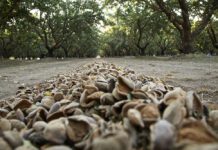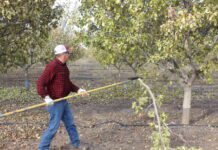
The profitability of your orchard depends on several external variables, most of which you won’t have much control over. Changing market conditions, labor shortages, regulatory pressures, irrigation availability, water sourcing amidst persistent drought conditions and variability in pest and disease management all play into the success of your crop.
There’s no simple equation that will guarantee you a profit come harvest time. The best tree nut growers can do to be successful in 2024 is to stay informed about changing conditions that affect your bottom line and make sound decisions so your financial and crop plans are aligned.
To do that, you need a comprehensive view of the market and your operation to put yourself in the best position to earn a profit and to take advantage of growth opportunities. Critical strategies tree nut growers can implement to improve their odds of earning a return in 2024 involve budget and money management, risk management and informed decision-making, especially when it comes to managing your capital.
Consider these tips to maximize your profits and create confidence that you’ll be in a position of success come harvest.
Pay Attention to the Interest Rate Environment
Interest expenses have gone up significantly for most growers over the last two years, largely because of rising rates. In June, the Federal Reserve decided to maintain interest rates at their current levels for the sixth-straight meeting, keeping rates at a 23-year high as they wait for more reassuring signs of controlled inflation before considering a rate cut. Reducing interest expenses may seem like a challenge in the current market, but you can find savings by regularly evaluating the interest rate market, reviewing your lending strategy and assessing different options that can help bring down your interest expenses.
Take a hypothetical example of an almond grower who is financing an equal amount for each of their input purchases over the same period. A financing package might include:
• Product Brand A at 9% APR
• Product Brand B at 2% APR
• Product Brand C at 4% APR
If this grower is using an operating line of credit to pay for these products, market interest rates range from 7% to 11% APR, making their interest payments significantly higher year-over-year. Another option to lower overall interest expense would be for the grower to use a blended-rate approach, financing the purchase of all three products, which would bring their interest rate down to 5% APR.
Focus on Cost Savings
Interest payments aren’t the only expense that can negatively impact your bottom line. Tree nut growers who use financing as part of a capital management strategy and who understand their cash flow needs have more options when it comes to saving money and supporting overall profitability.
You can’t only think of having the right mix of crop nutrition and protection products. You also need to consider how and when you’re paying for those products to get the most out of every dollar spent. Say your crop is infested with navel orangeworm; if you weren’t planning for this expense, you may find yourself in a tight, but avoidable position. Diversifying the streams of capital you can draw from in a situation like this, which includes complementing an operating line of credit with financing programs, will enable to you respond to an unplanned expense without worry.
It’s not a small feat to keep cash on-hand. Younger growers just getting their start may not have access to cash the same as growers who opt for cash-based transactions. But having cash on-hand certainly gives you the advantage when it comes to making investments in the health and vitality of your operation. Finally, don’t forget the simple and often avoidable things that can eat into your profits. Pay your bills on time. Be proactive in managing your credit, especially in the current market where finance charges and other fees can add up.
Manage Risk to Protect Your Profits
Risk is inherent in the ag business. No one can know with certainty how this year’s crop will fare, and in most cases, even if you did know the outcome, the things you’ll face on the journey to get there are hard to predict. The best course to manage risk in ag is to become an expert at adapting and building strong contingency plans.
Contingency planning is a critical element of your risk management strategy. In many cases, having a plan B (and beyond) at the ready, with financial options to back it up, can help you keep your profitability intact, even when you face conditions you weren’t expecting. Strategic financing of crop inputs can be a useful tool to manage. Similarly, you can reduce your financial risk by following some basic principles in managing your money:
• Don’t overextend yourself.
• Diversify streams of revenue and capital.
• Work with experts and people in your inner circle who can support your decision-making so your financial plan is as strong as possible.
Finally, embrace a forward-thinking approach as you navigate growing conditions and respond to different pressures driven by the market and by Mother Nature. Financial success comes to those who have a healthy view of risk because of the confidence they’ve built around their financial plan. As you look to the next fiscal year, it’s a great time to evaluate your finances and be proactive in considering these strategies to help improve your bottom line.















